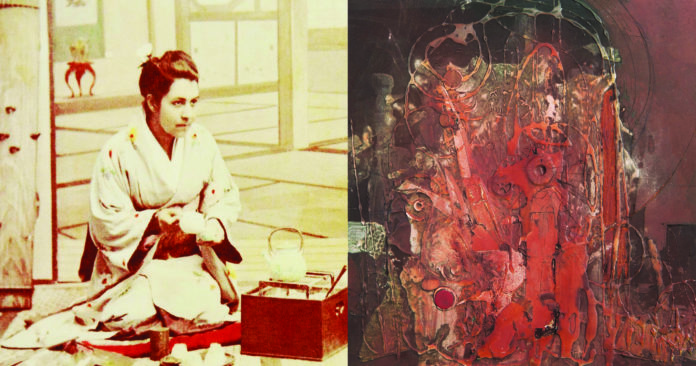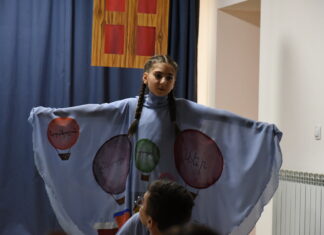WATERTOWN —The Armenian Museum presents a new exhibition in the Adele & Haig Der Manuelian galleries that explores the intertwined lives of diplomat Diana Agabeg Apcar (1859–1937) and artist Berjouhi Kailian (1914–2014). In 1919, history connected these two women in Yokohama, Japan. As refugees from the Armenian Genocide, Kailian and her mother found themselves in the shadow of Apcar’s sturdy branches as she helped them find their way to a new home in the United States. Kailian’s creative life flourished for 95 more years because of the diplomat’s compassion.
This exhibition centers on the notion that individuals who take a stand can impact lives exponentially.
Not many know of Diana Apcar and the impact she had on shaping the discourse about the plight of Armenians during WWI. Born in Rangoon, Burma (Yangon, Myanmar) into a prominent Armenian merchant family, she grew up in Calcutta, and later moved to Yokohama with her husband to start a new company. In Japan, she became aware of the plight of her fellow Armenians in the Ottoman Empire and acted as an unofficial diplomat to write letters, newspaper articles, and books to create a network of support for Armenians throughout the world. She provided food and shelter, helped with visas and travel documents, and fiercely negotiated with the steamship companies to unite Armenian refugees with relatives in the United States. She was named Honorary Consul to Japan by the Armenian Republic, making her one of the first female diplomats in the modern age.
A survivor of the Armenian Genocide, Berj Kailian fled from her home in Ottoman Turkey, strapped to her mother’s back, to Yerevan (present-day Armenia). They managed to board the Trans-Siberian railroad to a refugee camp in Vladivostok, Russia, where Diana Apcar reached out to bring them to shelter in Yokohama. She arranged their passage on the Mexico Maru to sail to Seattle, Washington, where they made their way to join family in Weymouth, MA. Berj became an artist and made paintings and prints, many of which recall her early history as a refugee in a visceral way. Layered surfaces with earthbound colors reveal a buried past that revisited her memory throughout her long life. This significant body of work was donated by her family to the Armenian Museum in 2018.
“Brought together for the first time, the objects, ephemera, and paintings on display connect these two women to tell this important story of persistence, survival, and witness,” said Jennifer Liston Munson, the museum’s executive director.
The exhibition will take place in the newly-renovated third floor galleries. This contemporary space, designed by Ben Thompson in 1969, has polished concrete floors and a cement waffled ceiling, and will contain objects from Diana Apcar’s life, including her pen that she used to write diplomats, world leaders, and friends around the world. Her personal papers and official documents will help tell the story of her astounding ability to create an extensive global network of supporters a hundred years before the emergence of social media.








